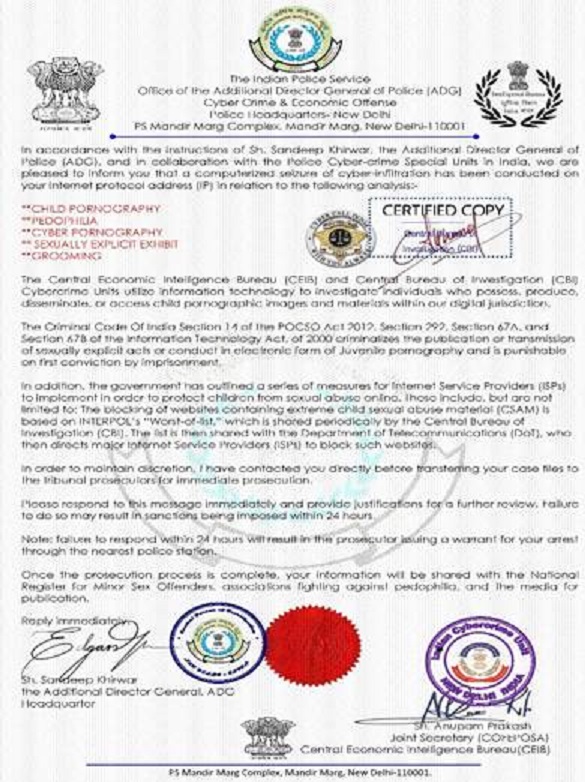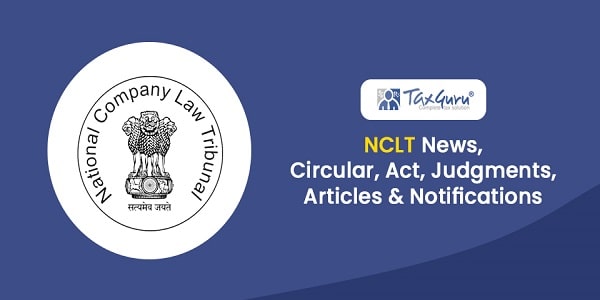Accounting Scandals
Several big firms have come under scrutiny recently for questionable accounting practices. Some of the world’s biggest accounting scandals.
Page Contents
WorldCom
WorldCom was one of the big success stories of the 1990s. It was a symbol aggressive capitalism. Founded by Bernie Ebbers, one of the most aggressive acquirer during the US mergers and acquisitions boom of the 1990s. WorldCom’s asset value had soared to $180bn before the US capital market started witnessing a downtrend.
WorldCom admitted in March 2002 that it will have to restate its financial results to account for billions of dollars in improper bookkeeping after an internal audit showed transfers of about $3.06 billion for 2001 and $797 million for the first quarter of 2002 were not made in accordance with generally accepted accounting principles.
In August 2002, An internal audit has revealed an additional $3.3bn (£2.2bn) of improperly reported earnings – taking the total to more than $7bn, double the level previously reported. $3.3bn was money from the company’s reserves, which was misrepresented as operating income.
As a result of the discovery, WorldCom said that its financial statements for the year 2000 will have to be reissued.
The company also said it may now write off $50.6bn in intangible assets. Former chief financial officer Scott Sullivan and ex-controller David Myers were arrested a week ago, and face seven counts of securities fraud and filing false statements with the SEC.
The company filed for Chapter 11 bankruptcy protection on 22 July, a process that protects it from its creditors while it tries to restructure. It became the largest bankruptcy in US history, listing $107bn in total assets and $41bn in debts.
In May 2003, WorldCom agreed to pay a record amount to the US financial watchdog. MCI (formerly WorldCom), while neither admitting nor denying any wrongdoing, came to a settlement over its massive accountancy scandal. It will pay $500m to the Securities and Exchange Commission, the highest fine ever imposed by the regulator. The original figure of $1.5bn was scaled down as MCI declared itself bankrupt and so received favourable treatment.
The settlement sorts out the civil lawsuits that have been filed. But the criminal cases relating primarily to the actions of former employees at the company are still pending.
Summary
When scandal was discovered: March 2002
Charges: Overstated cash flow by booking $3.8 billion in operating expenses as capital expenses;
Gave founder Bernard Ebbers $400 million in off-the-books loans.
The company found another $3.3 billion in improperly booked funds, taking the total misstatement to $7.2 billion, and it may have to take a goodwill charge of $50 billion.
Outcome: Former CFO Scott Sullivan and ex-controller David Myers have been arrested and criminally charged, while rumors of Bernie Ebbers’ impending indictment persist. On 9th March 2005, four foreign banks agreed to pay $428.4 m for settling the class action law suit by investors accusing them of hiding risks at WorldCom before its collapse.
Enron
In just 15 years, Enron grew from to be America’s seventh largest company, employing 21,000 staff in more than 40 countries.
It started out as a pipeline company, and transformed itself into an energy trader, buying and selling power. Among other businesses, Enron was engaged in the purchase and sale of natural gas, construction and ownership of pipelines and power facilities, provision of telecommunications services, and trading in contracts to buy and sell various commodities. It expanded into many diverse industries for which it had no unifying strategies and no expertise.
Fortune magazine named it the most innovative company in America six years in a row, not spotting that much of the innovation was sleight-of-hand accounting that amounted to fraud. Enron lied about its profits and used off-the-books partnerships to conceal $1 billion in debt and to inflate profits.
Some of the tactics used by Enron :
1. EARNINGS MANIPULATION
From at least 1998 through late 2001, Enron’s executives and senior managers engaged in wide-ranging schemes to deceive the investing public about the true nature and profitability of Enron’s businesses by manipulating Enron’s publicly reported financial results and making false and misleading public representations.
The scheme’s objectives were,
- to produce that reported earnings steadily grew by approximately 15-20% p.a.
- to meet or exceed, without fail, the expectations of investment analysts about Enron’s EPS.
- to persuade the investing public that Enron’s future profitability would continue to grow.
To achieve these objectives,
quarterly earnings targets were imposed on each of the company’s business units based on EPS goals and not true forecasts. When the budget targets could not be met, through results from business operations, they were achieved through the use of fraudulent devices. The primary purpose was to increase the share price which increased from $30 per share in 1998 to $80 in 2001 even after a stock split.
The rising stock prices enriched Enron’s senior managers in the form of salary, bonuses,grants of artificially appreciating stock options, restricted stock, and phantom stock, and prestigewithin their professions and communities.
Other methods used were :
a. manipulating reserve accounts to maintain the appearance of continual earnings growth and to mask volatility in earnings by concealing earnings during highly profitable periods and releasing them for use during less profitable periods;
b. concealing losses in individual “business segments” through fraudulent manipulation of “segment reporting,” and deceptive use of reserved earnings to cover losses in one segment with earnings in another;
c. manufacturing earnings through fraudulent inflation of asset values and avoiding losses through the use of fraudulent devices designed to “hedge,” or lock-in, inflated asset values; and
d. structuring of financial transactions using improper accounting techniques in order to achieve earnings objectives .
During 2000, Enron’s wholesale energy trading business, primarily its Enron North America business, generated larger profits mostly due to rapidly rising energy prices in the western United States, especially in California. This growth was more than the smooth, predictable annual earnings growth of 15 to 20 percent.Beginning in the first quarter of 2000 and continuing throughout 2000 and 2001, Enron improperly reserved hundreds of millions of dollars of earnings, and used large amounts of those reserves to cover-up losses in ENA’s “merchant” asset portfolio and from other business units such as EES. This misuse of reserves was discussed and approved among Enron’s and ENA’s senior commercial and accounting managers.
CONCEALMENT OF UNCOLLECTIBLE RECEIVABLES OWED TO ENRON ENERGY SERVICES BY CALIFORNIA UTILITIES
Enron also used reserves to conceal huge receivables (valued in the hundreds of millions of dollars), accumulated during the California energy crisis, that California public utilities owed to Enron and that Enron believed it would not collect. The California utilities were refusing to pay these monies, and they likely were headed for bankruptcy. Enron concluded that it should book a large reserve for these uncollectible receivables.
CONCEALMENT OF EES FAILURES BY MANIPULATING REPORTING
In the first quarter of 2001, new EES managers discovered and quantified hundreds of millions of dollars in inflated valuations of EES contracts that would have to be recorded as losses. This would wipe out EES’s modest reported profits and reveal it was a badly mismanaged business that was losing large amounts of money.
Enron’s senior management decided to conceal these EES losses from investors by offsetting them with Enron Wholesale trading profits earned in that quarter, as well as profits improperly reserved in prior periods. This was accomplished through a “reorganization” of Enron’s business segments that was made effective for the first quarter of 2001, enabling Enron to avoid reporting the losses in the EES segment. This was explained deceptively to Enron’s auditors and investors as meant to improve “efficiency”. This maneuver helped to conceal the hundreds of millions of dollars in reserves booked within ENA for the uncollectible California receivables owed to EES.
FRAUDULENT VALUATION OF “MERCHANT” ASSETS
Enron’s ENA business unit managed a large “merchant” asset portfolio, which consisted primarily of ownership stakes in a group of energy and related companies that Enron recorded on its quarterly financial statements at what it alleged to be “fair value.” Senior Enron and ENA commercial and accounting managers fraudently generated earnings needed to meet budget targets by artificially increasing the book value of certain of these assets, many of which were volatile or poorly performing. Likewise, to avoid recording losses on these assets, Enron’s management fraudulently locked-in these assets’ value in improper “hedging” structures.
ENA’s largest merchant asset was an oil and gas exploration company known as Mariner Energy (“Mariner“), which Enron was required to book at “fair value” every quarter. During the fourth quarter of 2000, there was a shortfall of approximately $200 million in Enron’s quarterly earnings objectives. Senior Enron and ENA managers decided to increase artificially the value of the Mariner asset by approximately $100 million in order to close half of this gap.
In the third quarter of 2000, other ENA “merchant” assets were similarly manipulated in value before being inserted into an elaborate hedging mechanism known as the “Raptors.” Enron and ENA managers instructed ENA managers that Enron had constructed a device that would allow ENA to lock in approximately $400 million in book value of its assets, thereby protecting them from later write-downs,
Other Manipulative Devices Used in Enron Wholesale
Enron employed other devices fraudulently to manipulate the financial results of Enron Wholesale and its predecessor ECT. For example, ECT entered into a large contract in 1997 to supply energy to the Tennessee Valley Authority (“TVA”) that resulted in an immediate “mark-to-market” earnings gain to Enron of approximately $50 million dollars. But in mid-1998, when energy prices in the region in which the TVA was located sharply increased, Enron’s unhedged position in the TVA contract fell to a loss in the hundreds of millions of dollars, which would have eliminated ECT’s earnings at the end of the then-current reporting period. To avoid this Enron’s managers removed the TVA contract from Enron’s “mark-to-market” accounting books by instead applying accrual accounting to the contract. Enron then did not disclose the loss.
Senior Enron and ECT managers devised a plan to avoid later disclosure of most of the loss from TVA by investing hundreds of millions of dollars in the purchase of power-plant turbines and the construction of “peaker” power plants that Enron otherwise would not have purchased. This mechanism ultimately resulted, in a later reporting period, in a recorded loss to Enron from the TVA contract that was hundreds of millions of dollars less than the actual loss incurred in 1998. Enron did not reveal this.
During 1999, Enron attempted unsuccessfully to shed itself of this costly investment in turbines and “peaker” plants. Unable to sell the assets at a profit to satisfy budget targets, Enron devised and executed a scheme to manufacture current earnings by agreeing to entering into back-to-back trades with Merrill Lynch & Co., Inc. which to sell and then repurchase energy generated by Enron’s “peaker” plants. These trades with Merrill Lynch, which virtually mirrored each other, ensured that ENA satisfied budget targets for the fourth quarter of 1999.
Apart from this many of Enron’s senior managers were charged with insider trading and indicted. Enron was also accused of creating phantom shortages in California’s unregulated electricity market to fleece ratepayers of an estimated $30 billion during the 2001 energy crisis.
Outcome:
Enron filed for Chapter 11 bankruptcy, allowing it to reorganise while protected from creditors.
Enron has sought to salvage its business by spinning off various assets.
- Enron’s core business, the energy trading arm, has been tied up in a complex deal with UBS Warburg. The bank has not paid for the trading unit, but will share some of the profits with Enron.
- Centrica, part of the former British Gas, has bought Enron’s European retail arm for £96.4m.
- Dynegy, a smaller rival, has won a key pipeline in the US after merger talks fell through. The pipeline was then resold to Warren Buffet.
Summary
When scandal was discovered: October 2001
Charges : Boosted profits and hid debts totaling over $1 billion by improperly using off-the-books partnerships; manipulated the Texas power market; bribed foreign governments to win contracts abroad; manipulated California energy market
Latest Developments: Ex-Enron executive Michael Kopper pled guilty to two felony charges; acting CEO Stephen Cooper said Enron may face $100 billion in claims and liabilities; company filed Chapter 11; its auditor Andersen was convicted of obstruction of justice for destroying Enron documents.
Xerox
In 2002, Xerox Corp. announced that it will restate its revenues by as much as $2 billion over a five year period from 1997 to 2001 because of an accounting error.
An audit showed that Xerox improperly posted revenues before they were actually made. The company described the accounting problems uncovered by an audit as a “timing and allocation issue,” saying the revenues that were posted early would be shown to have actually been collected later. An audit found that Xerox improperly booked far more revenue over a five- year period than the Securities and Exchange Commission estimated in an April settlement with the company over its accounting procedures. The SEC had estimated in April the overstatement was $3 billion for the four years from 1997 through 2000.
The mispostings of revenue could total up to $6 billion. The company disputed that and said the restatement for that period will be “no more than $2 billion” which is about 2 percent of revenue for that period.
Subsequently, the company announced that the extent of overstatement of revenues for a five-year period was even greater, at more than $6.4 billion. Once again the auditors at Xerox, as usual one of the international “Big Five”, had apparently not noticed the discrepancies for all these years.
Summary
When scandal was discovered: June 2000
Charges : Falsifying financial results for five years, boosting income by $6.4 billion
Outcome: Xerox agreed to pay a $10 million and to restate its financials dating back to 1997.
Arthur Anderson
Energy giant Enron went from being America’s seventh biggest company to being biggest bankruptcy in United States corporate history.
Enron’s success had been based on artificially inflated profits and on accounting practices that had kept hundreds of millions of dollars in debt off its books.
Andersen’s role
Arthur Andersen’s job was to check Enron’s accounts and to make sure they were an accurate reflection of the state of the business. The auditor would have been expected to spot large scale fraud or deception. The company also carried out consultancy work for Enron, leading to accusations of a conflict of interest.
When the energy giant’s business began to unravel, staff at Arthur Andersen destroyed thousands of Enron-related documents and e-mails.
This happened both before and after US stock market regulators had asked for more information about the energy giant’s accounts.
Charges:
Arthur Anderson was in trouble with the SEC in June 2001 over action related to its audit work for Waste Management Corporation, paying a record $7 million fine. Again in July the SEC filed an amended complaint against five officers of Sunbeam Corporation and the lead Andersen partner who worked on the Sunbeam audit, contending that Sunbeam’s financial statements were materially false or misleading. Thus Anderson was familiar with SEC enforcement proceedings and anxious to avoid any further sanction or censure.
Andersen audited the publicly-filed financial statements of Enron, a sophisticated trading and investment conglomerate with a global energy trading business. Enron employed accounting practices that were highly aggressive, stretching Generally Accepted Accounting Principles (GAAP) to their outermost limits. Although the firm knew of Enron’s accounting practices, Andersen bent over backward to accommodate Enron, its largest domestic client, whom the firm billed approximately $58 million in 2000.
Anderson’s management uncovered in late 2001 serious accounting problems at Enron that caused it to anticipate imminent SEC action and civil litigation. First, in September 2001, Andersen personnel discovered that its Enron engagement team had approved the use of an improper accounting technique for four Raptors, a group of special purpose entities (SPEs) that Enron used to engage in “off balance sheet” activities. To conceal the losses due to Raptors had experienced sharp losses, they allowed Enron to aggregate the four entities even though petitioner’s own accounting experts deemed that it as a violation of GAAP. Second, it was also found that Enron and petitioner had made a separate $1.2 billion accounting error in Enron’s favor which would require that Enron reduce its outstanding shareholder equity by $1.2 billion in its quarterly SEC filing,
After Jeffrey Skilling, Enron’s CEO, resigned unexpectedly it caused widespread speculation about financial problems at Enron and after a Wall Street Journal article suggested improprieties at Enron, the SEC opened an informal investigation of the company. The firm began to prepare for legal action (including SEC document requests) relating to Enron. By September 28, 2001, in-house attorney Nancy Temple held near-daily meetings or conference calls with an Enron crisis-response group composed of high-level Andersen partners. It was understood by the firm that investigation “was “highly probable and there was a “reasonable possibility [that this] will force a restatement”;
It was then decided to use the firm’s widely ignored document policy to purge harmful material from its files. In broad outline, petitioner’s document policy required that only information necessary to support the firm’s final audit opinion be maintained in the audit “workpapers.” All other information (including draft documents and handwritten notes) was to be permanently destroyed upon conclusion of an audit.
Andersen personnel (including many members of the Enron engagement team) were urged to comply with the document policy. It was explained that “if it’s destroyed in the course of the normal policy and litigation is filed the next day, that’s great . . . we’ve followed our own policy, and whatever there was that might have been of interest to somebody is gone and irretrievable.” When this was not complied with, Temple requested them to comply with the policy even though it actually provided that “in cases of threatened litigation, no related information will be destroyed” and identified “regulatory agency investigations (e.g., by the SEC)” as situations where “material in our files cannot be altered or deleted.”
After Ken Lay, Enron’s CEO, mentioned that Enron was reducing “shareholder equity” by approximately $1.2 billion, the SEC notified Enron by letter of its existing investigation and requested various accounting information and documents. Temple again ordered compliance with the firm’s document policy which led the Professional Standards Group accountants to delete hundreds of Enron-related e-mails..Duncan and the other Enron engagement partners also decided that compliance with the previously ignored document policy was imperative inspite of knowing that the SEC had already requested documents from Enron, and he acted out of concern that “extraneous material” in petitioner’s files could be used against it in civil lawsuits and the SEC investigation.
The firm’s Enron auditors were instructed to make compliance with the document policy a priority despite the mounting time pressure they faced in dealing with Enron’s accounting problems. As a result, the Enron engagement team made an unprecedented effort to destroy non-workpaper documents. Documents were shredded on-site and also were shipped to petitioner’s main office for bulk shredding. There was an extraordinary spike in physical document destruction that coincided with petitioner’s discovery of the SEC inquiry. In addition to the destruction of hard copies of documents, tens of thousands of e-mails and other electronic documents were deleted, representing at least a three-fold increase over usual activity.
The shredding continued notwithstanding the following:
- the firm’s discovery of two additional major accounting problems-one involving suspected fraud by Enron relating to an entity named “Chewco” and the other a large accounting error by Anderson itself;
- the decision by Enron’s Board of Directors to form a special committee to investigate Enron’s accounting;
- the efforts of Andersen partners to help Enron’s Board formulate strategy for dealing with the SEC and restating its finances;
- the filing of numerous shareholder lawsuits;
- and petitioner’s receipt of a subpoena for Enron documents from a private plaintiff.
Only after the SEC served a subpoena for its Enron documents, and Enron announced its intent to file a restatement did Duncan’s assistant send an e-mail to “Stop the Shredding,”
Trial:
Anderson, went on trial in Houston, Texas, after allegations that employees had illegally destroyed thousands of documents and computer records relating to its scandal-hit client.
The firm’s lawyers had argued that the shredding of documents had been routine housekeeping, but the jury decided it was an attempt to thwart federal regulators investigating Enron.
The prosecution’s star witness was former Andersen partner David Duncan, who was in charge of the Enron audit team. He admitted obstructing justice in April and told jurors that he had signed an agreement with Andersen to present a united front, claiming that neither had done anything wrong.
He had reneged on the agreement after much “soul searching”.
The trial heard how one Andersen executive said on a training video that if documents were shredded and then the investigators arrived, that would be good.
The accountancy firm was found guilty of obstructing justice by shredding documents relating to the failed energy giant Enron. The firm was sentenced to five years of probation, fined $500,000, and ordered to pay a special assessment of $400.
Andersen lost much of its business, and two-thirds of its once 28,000 strong US workforce. Following the conviction, multi-million dollar lawsuits brought by Enron investors and shareholders demanding compensation are likely to follow, and could bankrupt the firm.
Summary
When scandal was discovered: November 2001
Charges : Shredding documents related to audit client Enron after the SEC launched an inquiry into Enron.
Latest Developments: Andersen was convicted of obstruction of justice in June 2002 and to cease auditing public firms by Aug. 31. Most of the international arms of Andersen Worldwide have split from the US side of the business and were taken up by rivals.
Parmalat
Investors become concerned about the group’s accounts in March 2003 when the company failed to place bonds worth up to EUR500m with investors.
In December 2003 the company missed a bond payment it was disclosed that Bonlat, a Parmalat subsidiary in the Cayman Islands, did not have accounts worth almost EUR4bn at Bank of America. A scanning machine had been used to forge BoA documents, which were then sent to auditors who certified the accounts. Cayman seems to provide a key link in the network of missing funds. Italian investigators reportedly believe EUR250m, raised in a EUR500m bond issue in Brazil in 2001, ended up in Malta via a Cayman Islands unit of Spain’s Santander Central Hispano.
The total sum of bogus operations uncovered at the firm as of 30 June 2003 amount to $10bn, including $1.4bn in obligations by other companies in which Parmalat invested. An Italian newspaper claims that Parmalat had not bought their obligations at all, but had merely copied their names from the internet.
The Italian government, which had initially promised to bail out Parmalat, but later put some distance between itself and the fallout by enacting emergency bankruptcy legislation. The decree allows a company with at least 1,000 employees and debts of more than EUR1bn to apply for immediate but temporary protection from creditors. This allows the bankrupt firm to continue trading without government aid.
Auditors
Deloitte, acted as Parmalat’s group auditor from 1999, while Grant Thornton, which had been the group auditor, carried on as auditor at many of the company’s subsidiaries. The sub-Big Four accounting firm, which audited up to 49% of Parmalat’s assets, disassociated itself from its Italian operations claiming that “Grant Thornton (Italy) has been unable to provide sufficient assurances or access to the appropriate information and people in an acceptable timeframe.”
Deloitte denied acting negligently or being complicit in this massive fraud. Its relationship with Grant Thornton came under strain when ,in October, Deloitte declined to authenticate the value of Bonlat’s mutual fund in Cayman and also refused to approve a gain on a derivatives contract held by the fund.
For 3 years from 1999 to 2001,it qualified the accounts of Parmalat Soparfi SA, a Luxembourg subsidiary, on the book value of a participation in Parmalat Paraguay. There was also a qualification on the book value in Parmalat Food Industries South Africa Ltd. Deloitte treated Parmalat with suspicion, learning from The Enron case which led to collapse of its auditor Anderson too. Deloitte excluded these assets from its valuation of the subsidiary. However, Deloitte failed to do checks on those big bank accounts supposedly held by Bonlat at BoA.
In spite of the qualified accounts, Parmalat Soparfi SA was able to raise EUR246.4m in an equity-linked bond issue with Morgan Stanley acting as manager. The banks which helped Parmalat to raise money were JP Morgan Chase, UniCredito Italiano, Merrill Lynch, Morgan Stanley, Barclays Capital, Deutsche Bank, Citigroup, Santander Central Hispano, Bank of America and UBS. Citigroup and Bank of America held exposures of up to $1bn in Parmalat. Together, the banks sold about EUR8bn in Parmalat bonds between 1997 and 2002.
Outcome
The Italian financial police, the Manhattan District Attorney and the US Securities and Exchange Commission (SEC) have launched a probe of a different nature, looking into how the dairy group perpetrated one of the biggest financial scams ever, and whether any of the banks involved knowingly played a role in it. The banks could find themselves in trouble with SEC simply for having acted negligently by selling Parmalat bonds.
Italy’s market regulator, Consob, has asked a Parma court to annul Parmalat’s 2002 accounts, which showed net profits of EUR252m, due to the company’s failure to comply with accounting standards. According to latest estimates, Parmalat lost EUR1.4bn between 2000 and 2003. A company that had claimed to have cash balances of EUR4.2bn now appears to be missing assets worth at least EUR8bn.
In December 2003, A fraud investigation was launched, Parmalat went into administration and, at the end of December, Tonna, former chairman and chief executive Calisto Tanzi and other senior executives were arrested by Italian police. Tanzi has also admitted to diverting some EUR500m from the publicly quoted company into family owned firms.
The rating agencies, auditors and banks involved all claim they were misled or the victims of lies or fraud.
Developments:
Italian prosecutors have stated that the black hole at Parmalat could be bottomless, as the Tanzi family’s other financial interests like a football club Parma, tourism business Parmatour and others.
Key dates
9 December 2003: Parmalat misses EUR150m bond payment
15 December: Tanzi resigns as chairman and CEO
19 December: Bank of America claims a document showing EUR3.9bn on deposit in Cayman Islands is a forgery.
20 December : Fraud investigation launched
24 December: Parmalat goes into administration
27 December: Tanzi arrested
30 December: Tanzi admits EUR8bn hole in accounts. Claims managers acted of own accord
31 December: Tonna, Del Soldato and others arrested
8 January: Grant Thornton International expels Italian partner firm; Italian officials investigate Deloitte
Summary
When scandal was discovered: December 2003
Charges : Financial fraud to the extent of EUR10bn
Latest Developments: Investigation launched by The Italian financial police, the Manhattan District Attorney and the US Securities and Exchange Commission (SEC).
Authored by: CA Rajkumar S Adukia © , Email: rajkumarfca@gmail.com



























